
A Survey of Writers on Contemporary Writers
Listening to writers read and discuss their work at Newtonville Books, the bookstore my wife and I own outside Boston, I began to wonder which living, contemporary writers held the most influence over their work. This survey is not meant to be comprehensive, but is the result of my posing the question to as many writers as I could ask.
CORMAC MCCARTHY
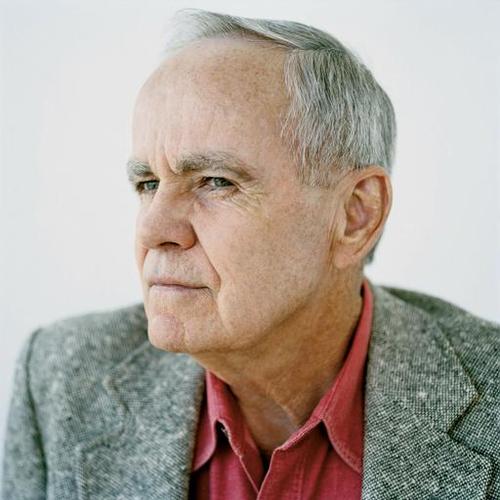
© The author
BROCK CLARKE: Cormac McCarthy was a big influence on my early writing, although maybe not in the way one usually thinks of “influence.” In the mid 1990s I was reading a lot of McCarthy: I’d begun with All the Pretty Horses, and then gone back and read all his books leading up to All the Pretty Horses, a book Itaught, and a book I loved, and a book that I think that gets short shrift byMcCarthy nuts because it sold a lot of copies and is relatively accessible andbecause it’s a western and not a southern and because there’s no necrophilia orincest in it. But it still is written the way those earlier McCarthy novelswere written—that is, in language that is purposefully antique, a rhetoric
that’s a holy cross between Melville, Faulkner, and the Old Testament. I was
crazy for it, and set out trying to do something similar in my work. When I say
“my work,” there really wasn’t much of it. I’d published a story, but
it was a story that, while ending up in my first collection, didn’t really have
much in common with the other stories in that collection. And those other
stories in that collection didn’t even exist yet. I was still struggling to
figure out what kind of stories I wanted to write, where they might be set,
what they might be about. With everything, in other words.
But I
did have an idea for a story: a friend of mine had told me a story about how,
during some family trip, his father had parked their car underneath an exhaust
fan outside a Kentucky Fried Chicken and when they came out the car was covered
with chicken fat. I loved everything about this story. So I set about stealing
it. But the problem was that I set about stealing it by way of McCarthy: the
story’s language was ornate, the mood was gloomy and full of portent, and the
story as a whole was absolutely humorless (unlike McCarthy, who can be very
funny). The story was awful. I couldn’t bring myself to finish it, let alone to
show it to anyone. And yet, after I realized how totally I had failed, I still
very much wanted to write a story about a guy whose car gets covered with
chicken fat.
That’s
when I realized that while I had found my subject (the grotesque), I hadn’t yet
found writers who could teach me how to do justice to the subject. I would find
them soon (Barry Hannah, Grace Paley, Donald Barthelme, Padgett Powell), just
as I would find writers who I’d read, but not closely enough (Flannery
O’Connor, John Cheever). And I would eventually finish, and publish that story
(“The Fat”). But I would never had done so if I hadn’t realized that
as much as I loved McCarthy, he was absolutely the wrong model for the kind of
stories I wanted to write.
TONY D’SOUZA: I love
McCarthy so much. Look at the ending of
Blood Meridian, where the long and violent epic loses its grip on everything,
on language, on its central character, the bloody novel whirling in to a sort
of meaningless that reflects the indestructability—for better or worse—of the
universe and existence and how it works:
“And they are dancing, the board floor slamming under
the jackboots and the fiddlers grinning hideously over their canted pieces.
Towering over them all is the judge and he is naked and dancing, his small feet
lively and quick and now in doubletime and bowing to the ladies, huge and pale
and hairless, like an enormous infant. He never sleeps, he says. He says he
will never die. He bows to the fiddlers and sashays backwards and throws back
his head and laughs deep in his throat and he is a great favorite, the judge.
He wafts his hat and the lunar dome of his skull passes palely under the lamps
and he swings about and takes possession of one of the fiddles and he
pirouettes and makes a pass, two passes, dancing and fiddling at once. His feet
are light and nimble. He never sleeps. He says that he will never die. He
dances in light and shadow and he is a great favorite. He never sleeps, the
judge. He is dancing, dancing. He says that he will never die.”
Who is
McCarthy’s judge? He’s loathsome, brilliant, vicious, relentless. And he will
never die. Is he evil embodied? Is he mortality itself? We recognize that he
really will never die, what he represents, that it will keep whirling and
dancing just as the universe will. We will die but this monstrous
thing—whatever it is—will not.
McCarthy
is writing about that which our culture works hardest to ignore: that our lives
are brief and perhaps without any meaning beyond what they have meant to us.
And what happens to that when we are gone?
PHILIPP MEYER: Cormac is
one of the few contemporary writers with an absolutely dominating style. And in
the end, style really does matter. It takes longer, it’s much harder to write,
you have to match it absolutely to the content or it sounds hackneyed. It’s
faster and easier to write without style in the same way it’s faster to play
music without caring to hit the notes in an intentional way. There are a few
great writers who are not great stylists, but not many.
After a certain
number of Cormac books, you feel like you’ve seen into his heart and know what
you’re going to find next time you look. It will probably be dark, it will
probably be hopeless, and it will probably not give much importance to
internality. That said, I think some of McCarthy’s books are going to last,
especially Blood Meridian. I am not sure there is another book like it in
American literature. It is a perfect book. Narrow, but perfect—it is the
highest level of expression of a certain aesthetic and worldview. One of those works
that can’t be copied.
JAMES SCOTT: Cormac
McCarthy was—and is—everything to me. He can do anything. The darkness and
violence are what he’s most famous for, but he can also be hilarious, and he
does all of this with a Biblical rhythm that’s both inevitable and surprising.
I can’t
even remember which McCarthy book I read first, as I then devoured another five
or six in quick succession, but it was the summer after my freshman year of
college. I felt the magnetic tug of a voice that was totally different than
anything else I’d ever read. McCarthy marries that incredible voice with genre
elements, real characters, cartoonish characters, twisting plots, and
clear-eyed settings. The way he describes the natural world reflects upon the
characters and the plot in a natural but endlessly complex way. The fact that
he can make so many disparate pieces work together defies all logic.
I never
get as lost as when I’m reading a Cormac McCarthy novel, and that’s the
greatest thing anyone can aspire to. It’s magic.
JOSH WEIL: I
discovered his work in graduate school and it slammed into me like nothing else
I’d read before. His Child of God taught me how deeply a writer can
commit to an unsympathetic character, and how powerful that could be. It tapped
into an interest I’d already had, and drove me in further in that direction
with my own work. And it made me brave. That bravery is something that a lot of
these writers gave me; they let me know that it could be done, that it was OK
to go out on that limb. With books like Blood Meridian and The
Crossing, McCarthy also opened my eyes to the ways a writer can challenge a
reader, narratively (I’m still not sure I understand the ending to Blood
Meridian, but I know it feels right to me, and that that feeling
makes me, as a reader, strive to understand it, and that striving engages me
more fully). In The Crossing, he takes my expectations of traditional
plot structure, hooks me with a feint, and then steals all my preconceived
ideas right out from under me. I love that. Again, it made me see the
possibilities for narrative in a new way.
JAY MCINERNEY
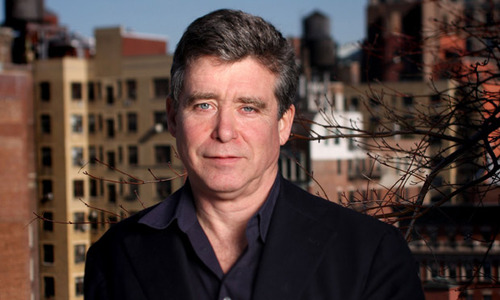
© Dan Callister
ADELLE WALDMAN: Jay McInerney is often thought of as a novelist who
excelled at evoking a particular time and place—namely, Manhattan in the 1980s.
He certainly does, but I wonder if that one fact too often eclipses his many
other achievements as an acutely observant psychological novelist and an
excellent and stylish prose writer.
Re-reading
Bright Lights, Big City several
months ago, I was struck by the thought that what enables a writer to capture a
particular time and place is not so much the period-details—brands of clothes
worn, detailed descriptions of food eaten, long passages about interior
décor—which after all we can get from journalism, from fawning articles about
the rich and famous, but rather the interplay of a few, well-chosen period
details with observations that are both acute and universal, that aren’t
specific to a time and place. You certainly see that in McInerney’s fiction.
Take Bright Lights, Big City’s
wonderfully executed opening scene—a raucous dinner party given by its
protagonists, Russell and Corrine Calloway. Apart from the touches that place
the book in the New York literary world of the 1980s, the scene is full of
smart, universal observations, like this one about Russell and Corrine’s friend
Jeff, who recently a published a successful novel: “Everyone listened to him
just a little more attentively these days, as he listened less attentively to
everyone else.” This is a wry comment on success and social life, and how the
two interact; it is not specific to the 1980s.
Apart from his evocation of a time and a place, McInerney
consistently brings to his fiction an eye for psychological nuance and social
detail, but unlike some writers who dissect status and status signifiers,
McInerney resists the satirical: he doesn’t reduce his characters to
caricature. In McInerney, as in life, the presence of ambition, or illicit
lust, or greed or snobbery, does not mean the absence of more tender qualities.
Characteristic is (also in Brightness
Falls) his introduction of Harold Stone, a celebrated book editor and a
prominent member of the New York intellectual establishment, who is also
Russell’s boss. This is how Russell views Harold upon walking into his office:
“Looking up, [Harold’s] yellow-brown eyes
blinking irritably through horn-rimmed glasses, he simulated something awakened
out of a bad sleep… His lack of the recommended minimum social graces seemed
a matter of principal, as if charm, manners and the other lubricants of
interpersonal contact betokened a lack of seriousness.”
McInerney’s
presentations are orchestral—they don’t rely on a single note or emotional
effect. We’ve also just been told, by Russell’s colleague Washington, that
Harold “used to be a big liberal” but
isn’t anymore. “Look at the people he hangs out with now, socialites and
neo-con economists, leveraged-buyout dudes. You think they’re jamming about
Marcuse and Malcolm X at dinner?” Washington says. Such precision is typical of
McInerney, who also gives us, cheekily and knowingly, Harold’s professional
backstory:
“A junior associate of the old Partisan
Review gang, Harold Stone became known as a wunderkind even before he came
down from Harvard with an essay titled ‘Bakunin and the Idea of an
Avant-Garde.’ He took a job at Knopf, shared a girl with Bellow and got his
glasses broken by Mailer, thereby sealing his reputation.”
I fell in love with Jay McInerney’s books in the late
1980s and early 1990s, as a teenager in the suburbs who knew nothing about New
York. I decided I wanted to live in New York in part because of his books. But
when I re-read them now, as an adult and as a New Yorker, I see so much else to
admire, so much that is timeless and gives pleasure to the reader.
Speaking
of pleasure, I should also add, in case anyone has forgotten, that McInerney is
very funny. Take this description of the Calloways’ neighbor, an elderly widow
who peers out of her apartment door “as far as the chain would stretch” every
time she hears someone walking down the hall, “as if her it were her fondest
wish with to be a prosecution witness before she departed this crime-ridden
world. All day long she opened the door like a bivalve drawing nutrients from
the ocean.”
DAVID MEANS
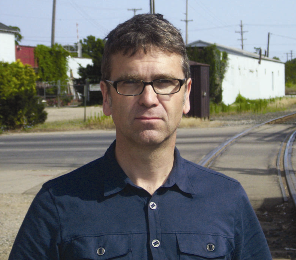
© Max Means
JAMIE QUATRO: I
discovered David Means’ short fiction in 2008, during my last term as an MFA
student at Bennington. I read The Secret Goldfish first, and was knocked
out by the prose—not just by the inventiveness of the narratives, the
unpredictable shifts in point of view—but by the sheer poetry of the
language itself. Reading a Means story, I thought, was like listening to a
piece of music. I read Assorted Fire Events and A Quick Kiss of
Redemption in quick succession, and bought The Spot the day it was
released.
What was
most salient to me as a writer, given the theological concerns of my own work,
was the religious symbolism in the stories. Here was someone working in the
vein of the great mid-century Catholics: Flannery O’Connor, Walker Percy, and
John Updike. So when, in a December 2012 NYTBR essay, Paul Elie claimed that
Means’ work treats Christianity like the sludge in the Kalamazoo river, “toxic
if handled in anything more than trace amounts,” I balked. Surely not! Take
“Railroad Incident, August 1995,” a piece that all but demands reading as a
symbolic Passion of Christ: the “dainty man” at the story’s center sets out
to“betray himself,” limping on a wounded heel (calling to mind the
protoevangelium of Genesis 3: he shall crush you on the head / you shall bruise
him on the heel); when one of his four assailants first spots the limping man,
the assailant says—the first line of dialogue in the story—“Jesus shit;” they
mock and nearly beat the wounded man to death, then drag him into a tunnel
“near the crossing grade,” believing that what they’re doing is part of an
overall scheme—“the stars were aligned in certain ways.” They imagine if the
man recovers he might chalk up his experience to “a personal state of deus
absconditus, abandoned in a sense like Christ on the cross” (recalling
Christ’s own invocation of Psalm 22 on the cross: “Eloi, Eloi, lama
sabachthani?”). The perpetrators kill him with a final kick and—“an
afterthought, a coda, a grand finish”—lay the body across the tracks. Later,
the corpse is severed by an oncoming train; the engineer doesn’t watch the
“cleaning away of the body.” It’s hard not to read this story
symbolically; yet no critic to date has mentioned the specific parallels to the
Passion.
And it’s
not just this story; Means’ work is rife with the language and imagery of the
Christian faith. In “Coitus,” Bob Sampson is acutely aware, during the act of
adultery, of his sin: “he prayed for the filth he was in, the deep
blood-sucking void that he knew he had fallen into.” In “The Interruption” the
homeless men wait for Roy to come out of the Hilton “the way anybody would wait
for a savior.” Means uses a tiny crucifix as a footnote: “For Jesus fuck’s
sake. Give the guy a chance,” the text says, a tiny hovering cross punctuating
the injunction (the footnote tells us that two men drag Roy out of the hotel,
his side bruised). Or look at the implicit symbolism in “The Secret Goldfish”:
the Fish, traditionally a symbol for the Christian faith, wallows neglected in
his tank while the marriage falls apart. (Means wryly points out: “he was not a
symbolic fish”—of course begging symbolic reading). The marriage fails but Fish
survives; the family, once the father has left, “will hold a small party to
celebrate his resurrection.”
Or take
“Reading Chekhov”: the lovers attend church together; the pastor quotes Job,
speaks of “the elegance of grace, the manner of forgiveness and the nature of
redemption.” The seminarian tells his lover that “adultery is multifaceted,”
using the weighty biblical term for the act (rather than the
trip-off-the-tongue “affair”). Toward the end of the year-long affair, he
brings up the idea that it may be God’s Providence that brought them together:
“When they tried to get God in, when he mentioned the idea of God nudging them
together, the narrative, she would later think, became banal and meek, rooted
in the world.” In typical Means mode, the point of view shifts—we’re
alternately in the heads of the seminarian and the woman with whom he’s having
the affair—and in her thoughts we do find guilt: “The shame she felt
came from the truth: she had been fucked and was fucking.” Neither character
feels a lack of compunction; the woman wants to stay in her marriage: “no
matter how fanciful and wild, no matter how impulsive, in retrospect [the
affair] had stood within the fact of the marriage itself.”
Certainly
a symbolic appropriation of Christian language and imagery in fiction does not
“make belief believable;” nor does the fact that Means views the darkest acts
of violence through the metaphysics of the Christian narrative automatically
render his voice a “Christian” one. But it bears mentioning that if the
biblical narrative is concerned with anything, it’s with Redemption; and, as
O’Connor says, “Redemption is meaningless unless there is cause for it in the
actual life we live, and for the last few centuries there has been operating in
our culture the secular belief that there is no such cause.” Means is one of
O’Connor’s successors precisely because he is a writer who finds in modern life
“distortions which are repugnant to him, and his problem [is] to make these
appear as distortions to an audience which is used to seeing them as natural;
and he may well be forced to take ever more violent means to get his
vision across to this hostile audience.” [itals mine]. Means’ work is not,
after all, symptomatic of what Elie’s Catholic ancestors called “scrupulosity,
an avoidance that comes at the cost of fullness of life,” but is reverting to,
or relying on, symbol, taking Christian belief subsurface in order to reach an
audience for whom the very term “Christian” is anachronism. To return to The
Spot: in “A River in Egypt,” Cavanaugh outlines his set design for an
isolated cabin with chinks in its mortar “that, when lit from behind, shot
small beams…of light through the walls and the dust motes, forming crosses
through which [the writer] might walk.” It’s an apt image for Means’ fiction,
which—seen through the right lens—is shot through with cross-shaped light.
LYDIA MILLET
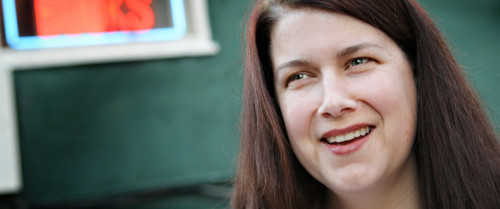
© Getty Images
KEVIN BROCKMEIER: I read
my first Lydia Millet novel through the advocacy of Paul Ingram, one of the
booksellers at Prairie Lights in Iowa City. That novel was My Happy Life,
which, alongside Oh Pure and Radiant Heart, remains my favorite of her
books. The two of them are very different—My Happy Life a slender and
I daresay perfect character-study organized around the experiences of a woman
who’s incapable of perceiving anything other than benevolence in the abuse the
world dishes out to her, and Oh Pure and Radiant Heart a long and
mostly comic fantasy about the resurrection of Robert Oppenheimer, Enrico
Fermi, and Leo Szilard, shuffled together with a caustic history of the nuclear
age. Even their opening sentences show how dissimilar they are in their
effects: “The door is locked from the outside; they went away and forgot me”
and “In the middle of the twentieth century three men were charged with the
task of removing the tension between minute and vast things.” I can’t say that
I’ve directly used Lydia’s example to write any of my own books—or at least not
consciously. But for me her fiction stands as a model of the kind of work that
can result when a writer combines imaginative daring with dynamic, exact,
emotionally suggestive prose.
ALISSA NUTTING: I was
first attracted to Lydia Millet’s writing for its hard-spun comedy. Tucked
between the cheek and gum of each novel by Millet is one burning wad of truth:
life is not here to meet our needs—things are not fair that way (or any way,
really). The taste of this affirmation coats the events, characters, and
content of the stories; flavors them. The ironic distance between what
characters desire vs. what they get is often funny, sometimes sad, and
frequently poignant. This is the sympathetic side of the coin Millet is
pressing into our hand.
The
other side is a summoning of self-inventory. The personal flaws of so many of
Millet’s characters are stripped bare and examined for judgment—judgment
meaning not so much ‘culling blame’ as ‘reason’. At its most trenchant, her
work might wrongly be interpreted as anti-human—that we’re simply a hopeless,
violent lot and that’s that. But it isn’t. On the contrary, Millet’s body of
work is profoundly social, particularly in its use of satire. Socially, one of humor’s
greatest uses is shaming: it’s a nonviolent way to suggest a course-correction
is needed.
Beyond
the humor, Millet’s writing stresses our social interdependence (and therefore
our social responsibility) both to one another and to the other creatures on
our planet. It holds up an odd sort of mirror: the reflection is not our own
image, but rather the impossibility of our own image. We cannot, as her books
attest, accurately understand our own individual selves. Even the most
intelligent among us—perhaps even especially the most intelligent—are woefully
myopic in this way. Sometimes we don’t fully understand our own context.
Sometimes we’re too excited, curious, obsessed. Sometimes we’re greedy, or we
lack information. Whatever our own failings are, they’re incredibly defensive
and will likely protect themselves from being seen until it’s too late, if at
all.
We have
better luck in observing the failings of others. We can understand the things
they don’t about their own situation; we can take in the big picture. We can
approach with the objectivity needed for true perspective. In order to evolve
in any true ethical sense, we must therefore learn from each other because we
cannot clearly see ourselves. We’re thus dependent on learning from one another
in order to figure out a better path for all of us. And there is a lot to
learn.
Millet’s
work is an objective correction to the worst of humanity’s platitudes—the ones
that prioritize motive and struggle, allowing us to rationalize the terrible
outcomes we’re responsible for. In Millet’s books, we see how just brittle the
bones of intention are, how easily crushed by consequence. We have to live in a
way that champions outcome above all else; otherwise our civilization and
environment will self-pulverize. The finely ground powder left behind will
attest only to the fact that we wanted more.
STEVEN MILLHAUSER
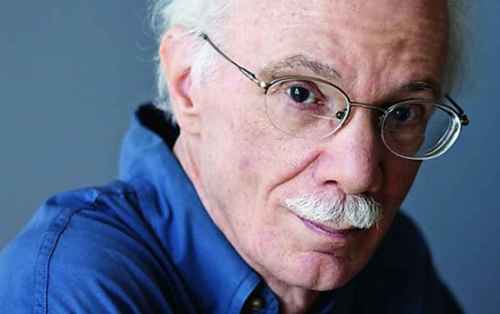
© Dan Nosowitz
ADRIENNE MILLER: Do
people know what a genius Steven Millhauser is? If they don’t, maybe his
refusal to be classified, and his roving intelligence, might have something to
do with it. (I think of him like Kubrick in a way—a big and fascinating
brain that seems to know a lot about, and have an interest in, absolutely
everything.) Is his stuff historical? Yes, but he’s trickier than that. Is it
magical realism? Yes, but he’s written some of the most heartbreaking domestic
stories you’ll ever read, too. His books are rich, glorious Faberge eggs of
delights, and he’s written so many of my all-time favorite short stories (can
we discuss the tour-de-force epics “Eisenheim the Illusionist” and “The Wizard
of West Orange”?). One of the many things I value him for: his weird,
unsettling wit. And he’s so good with character. His quieter domestic stories
tend to feature small-town people—reminiscent, in their essential mildness,
of characters in Sherwood Anderson or Thornton Wilder—who seem to all be
touched by some kind of fantastical event: a shadowy figure in a trench coat
terrorizes a sleepy suburb by slapping its inhabitants in the face; a group of
children discovers that the fantasyland of elaborate snow sculptures appearing
in their backyards doesn’t leave them unequivocally happy, but instead fills
them with an ambiguous new feeling—“a sharp, troubled joy” (and how great is
that? “a sharp, troubled joy”); and, in the classic, amazing story “The Knife
Thrower,” otherwise unassuming women derive a nearly sensual pleasure from
allowing themselves to be the targets in a magician’s fatal game. These brushes
with the extraordinary lead these characters directly to the center of life.
Millhauser is great because he asks the big questions …
and isn’t that all we’re ever trying to do as writers? As his people emerge
from their states of passive tranquility, they begin to question everything
they once believed to be true—a transformation rendered most vividly in the
devastating story “History of a Disturbance,” which examines how a man’s abrupt
mistrust of words causes his marriage to disintegrate, and “the old world of
houses, rooms, trees, and streets shimmers, wavers, and tears away, revealing
another universe, as startling as fire.”
HELEN PHILLIPS: Steven Millhauser’s work has always felt
familiar to me, as though it describes an alternate universe I too have glimpsed.
Images from his stories—the somnambulant palace hallways, the house large
enough to contain thirteen wives, the bizarre dresses and surreal contraptions and
logic-defying inventions—swell into my consciousness like images from my own
dreams.
One Millhauser story in
particular has shaped me as a writer. “In the Reign of Harad IV” appeared in The New Yorker in April of 2006. I was
halfway through my MFA, struggling to figure out what kind of writer I wanted
to be (and wondering why I felt such an urgent need to be a writer at all). The
realist writers I’d been reading, for all their skill and power, only
underscored for me that my writing ambitions—vague though they were—lay
elsewhere than in evoking the known world.
“In the Reign of Harad
IV” is an exploration of the inexplicable, maniacal, even absurd obsession to
which artists must sacrifice themselves. It instantly became a sort of creative
manifesto for me, due both to its matter-of-fact fantastical tone and,
moreover, to its extended metaphor about the artist’s path.
The story concerns a celebrated court
miniaturist, famous for “the uncanny perfection of his work.” Millhauser’s
miniaturist develops an addiction to making ever-smaller reproductions of
familiar objects, a drive that only increases over the course of the story. The
joy of this endeavor is directly connected to its difficulty. Eventually, the
miniaturist grows frustrated that even his most mini-miniature “reveal(s)
itself too readily.” He challenges himself to work entirely in the realm of the
invisible, to satisfy his own inner eye. The King reproaches him, requesting
that he return to “the visible miracle,” yet even as outside forces bear down
upon him, the miniaturist remains true to his private quest “for a world so
small that he could not yet imagine it.”
The time comes, though, when the miniaturist
finds himself “wishing that he could reveal his work to someone.” His
loneliness is complete; like Kafka’s hunger artist, he has been abandoned and
forgotten. So when a pair of young apprentices comes by to question him about
his epic project, he can’t resist showing them his invisible kingdom. They
praise him, but he perceives the hollowness in their enthusiasm. He is left
knowing that “from now on, his life would be difficult and without
forgiveness.”
At a time when I was
unsure how to direct my intense drive to write and my attraction toward surreal
subject matter, unsure how these urges related to my hope that my work might
someday be appreciated by people other than my family and friends, this story
read like an exhilarating parable about how to be an artist. Be relentless in
your vision. Don’t bow down to the demands of outside forces. Your only
obligation is to your own obsession. Millhauser gave me permission, and
courage, to pursue the strange worlds I wanted to pursue.
Revisiting it now, I wonder if this can also be
read as a tale of warning; one can’t help being reminded of the emperor with no
clothes. Is Millhauser cautioning us against forgetting about our readers,
losing our audience awareness? Should the miniaturist’s deep loneliness strike
fear into all creators out there? We may relate to the miniaturist, but don’t
we also fear for his sanity? Yet even as it explores the plight of an artist
who pursues his vision to the exclusion of his audience, Millhauser’s story
itself lets the reader in; it charms and fascinates and instructs. He takes the
trope of the obsessive artist to its absurd, painful extreme in order to make
his point. Ultimately, though, I believe he is suggesting that it is only by
being uncompromising in one’s creative vision that one can have any hope of
connecting meaningfully with one’s audience. This may not be true for our poor
miniaturist, but it is true for his creator.
Soon after I read “In the Reign of Harad IV,” I
took Millhauser’s advice quite literally; I began writing my novel-in-fables And Yet They Were Happy, comprised
entirely of miniature stories, all exactly 340 words. Though I doubted it would
ever be published, I’d never been so happy creatively. Like Millhauser’s
miniaturist, I felt “a deep, guilty excitement,” as if I’d “come to a forbidden
door at the end of a private corridor.”
DAVID MITCHELL
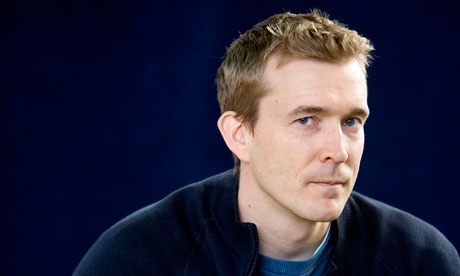
© Murdo McLeod
JESS WALTER: David
Mitchell’s Cloud Atlas was a revelation in terms of structure,
reinforcing some things I’d already believed about the freedom a novelist might
have to treat the structure of a narrative as its art. So much emphasis,
especially in creative writing programs, had been on the writing itself, on the
quality of the sentences, and while Mitchell writes with a poet’s sensibility,
he also revels in story, and doesn’t treat narrative as a finite series of
choices, but as an explosive element of fiction itself. Many writers are
dismissive of “plot” or speak about it as the least interesting element in
fiction; Mitchell connects the idea of a story’s plot to its structure and
because of that, finds new and innovative ways of crafting novels.
RICK MOODY
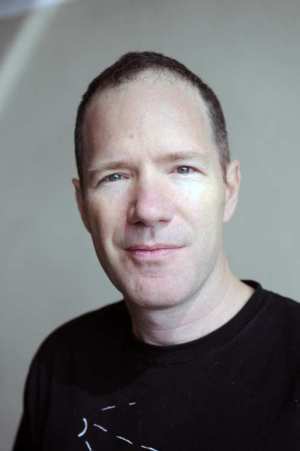
© bigthink.com
CHARLES BOCK: I worked as a bartender in exchange for room
and board at the Bennington Summer Writing Seminars, and took a workshop from
Rick Moody. At the time he’d published The Ice Storm, which may not have been
even reviewed by the Times, and certainly hadn’t been made into a superb movie
by Ang Lee. But that summer Rick had
published out a book of experimental fiction—stories and a novella, which
revolved around a sex club in the meatpacking district and junkies on line to
score in the east village. A close
friend of his at the time was important in putting the two of us in touch, and
getting me to work at Bennington and take his workshop. She pretty much put The Ice Storm in my hands
and took me to a reading he did at a now-closed bookstore on 17th
and 7th. Rick had just shaved
his hair and mostly pretty girls sat around him, watching raptly as he read
from the opening story in that collection.
When our mutual friend introduced us afterward and said I’d be in his
workshop, he was polite and that was about it.
Between then and the workshop, I read Ice Storm, and inhaled the novella and
its contents, and basically had my mind blown to hell and back. “The Ring of Brightest Angels Around Heaven”
changed how I thought about sentences, about structure, about what fiction can
do. That book, to me anyway, is a real bible as to how far experimental writing
can go without losing a reader. One or
three stories don’t work and indeed act as the example of where you go too
far. But it was the entirety: experimental deeply bohemian/decadent/artisty
stories, all these media savvy art whores and wannabe screenwriters and
self-aware couples, you know, the life I’d come to NYC to lead. And the writing just fucking blew my mind, it
was just unfathomable, so funny and
cynical and new and cool and glittery and heartbreaking. (That the author and
I, at the workshop, actually didn’t seem to connect only made it better,
because I really felt that I had to win his respect. Had to somehow write my way to his respect,
which just wasn’t happening, and so made me work harder for his approval.)
At that same workshop, Rick read from the
opening of an unpublished novel, what would become Purple America. It’s the
thirteen page, one sentence paragraph, separated by semicolons, where every
segment starts with Whosoever… The opening of that first sentence
actually got changed slightly from what he read to make it more palatable to
readers—it was just a massive FUCK YOU of an opening. Like:
nobody can do this. But meanwhile
it also delivers the goods, a rendering of an adult man in the throes of a
crisis who has to come back home and take care of his invalid mother. At once it’s sad and beautiful and heartfelt
and touching. It was, without a doubt, the most awesome thing I’d heard, live,
writing-wise.
All these years later the opening of Purple America remains a tour de force
of language and pace, the best opening to novel of the past who knows how many
years (whatever you are thinking to yourself as a topper, with all due respect,
that opening can fuck itself).
One thing that just amazed me in his writing
was the inclusiveness, the connections: where thread on a tee shirt might come
from, the financial plight of the team being advertised on the front of the
shirt, how that and eight million other things could be focused and harnessed
and used, via language and placement, to create a sense of a person and a place
and a country. Again, it’s 1995. The internet is just starting to emerge and
explode. On the page, he was really the
writer with the language and energy of that that explosion. He was angry about our country and angry
about all kinds of things, and also had so much heart. And by shortening the space of time he was
writing about, and then filling that short scene with everything, everything, he was able to blow out
these little moments, just stuff the shit out of them.
STUART NADLER: At
twenty, I loved Fitzgerald and Nabokov and Cheever, or anyone who could write a
pretty sentence, but I also loved the contemporary fiction of the mid and late
90‘s, the late post-moderns, and especially the first three or four books by
Rick Moody. I read his third novel Purple America at the perfect time in my
life––at the beach in Delmar the summer before I graduated at NYU. More than
anything, this was the book that made me want to start writing fiction again.
I’d been a film student in college, learning lenses, photography, lighting, and
lugging cameras and sandbags and apple boxes all over lower Manhattan. I tell
people now that I always knew I wanted to be a writer, but that I never wanted
to be an English major. I didn’t know that then. I’d written when I was young,
and stopped, and thought that I might be a musician, and then a filmmaker, and
now, reading that book at the beach, I knew. I haven’t read it since. Part of
me is afraid it won’t stand up. But it doesn’t matter. It got me writing
seriously, and it attuned to me to the idea of language as art. This was, more
or less, the prevailing idea that dictated the next few year or two of writing.
Language came first, and everything else––character, structure, narrative––all
of that fell off to the side. Not because I didn’t think it mattered, but more
likely, because I had no idea how to even think of it.
LORRIE MOORE
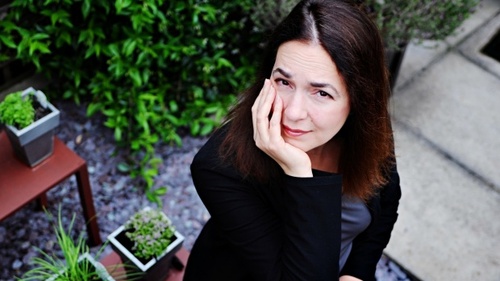
© Linda Nylind
ELISA ALBERT: Moore-as-influence
is by now such a cliché that her “importance” seems almost to go
without saying, but let me tell you: “How To Become A Writer” had me
face-to-floor. From the opening line (“First,
try to be something, anything, else.”) to the last (that hilariously
transparent effort at literary observational description), she just hit it for
me, then, there. Gone with the Wind wasn’t going to cut it for me after that. The
recognition was immediate and so gratifying.
It was all the things literature is supposed to be and do but so seldom
is or does––it reached out a hand to me and changed my life, empowered me to
see myself as having a perspective that matters. I thought: oh, i can see things other people
don’t or won’t see. I mean, every single
one of us has that potential, but unless you fight hard to hold on to it, the
life will tend to really file it down.
“Pay attention to what they tell you to forget,” said Muriel
Rukeyser. Anyway, that’s an awful lot for a single short story (or short story
collection) to do. Fiction can be
deeply, profoundly good, well-crafted, and smart, and still not manage to
change your life.
KATHLEEN ALCOTT: Lorrie
Moore is an immutable source of comfort for me. That works so overwhelmingly
odd—so filled with what I see as nearly-private jokes between the author and
the page—are so beloved, by so many, is a bright sign of contemporary
readership.
ALIX OHLIN: I
remember that the first time I read her work, my eyes just widened and I felt
like I’d been hit in the solar plexus (in a good way). It seemed very new to
me, unlike anybody else’s voice who’d come before. The wordplay, the humor, and
also the anger in her work spoke to me—there’s a real edge to it that
showed me new possibilities, especially when it came to writing about women.
TONI MORRISON
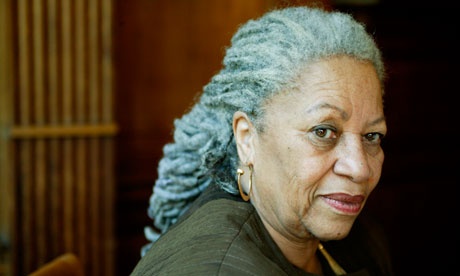
© Murdo McLeod
JENNIFER CODY EPSTEIN: One of
my most searing experiences as a reader took place more than a
quarter-of-a-century ago. I was a sophomore in college, lying on my bed,
wrapped so deeply in the papery grasp of a novel that I was having trouble
breathing. The sentences were lyrical,
gorgeous—
among the most exquisitely-crafted I’d read. But it was the scene
they relayed that was making me gasp: on a cold dirt floor in Ohio, a father
was raping his adolescent daughter. Yet it wasn’t the act’s blasphemy that
shocked me. It was the fact that what I felt for this rapist was not loathing,
not disgust, but grief. I felt grief for the unconscious child on the
floor as well, of course (the child over whom the father, dazed and spent,
drapes a blanket before slowly leaving the room). But my overriding sympathies
went not to 11-year-old Pecola Breedlove, but to her irreparably-damaged father
Cholly.
Mystified,
I read the section twice, and then a third time; studying its seams and
wordings. I tried to comprehend how the writer had performed such literary
alchemy; how she’d transformed one of the most reprehensible crimes imaginable
into an act of tenderness, almost love. That writer was Toni Morrison, the book
her debut, The Bluest Eye. In it’s
pages, I’d found a devastating portrait of an impoverished family in
post-Depression Ohio, one trapped by race, economics and era. Even more
powerful, though, was Cholly’s heartrending descent from an idealistic youth to
the warped soul we see in the book’s final pages; a man who blearily—almost
poignantlyconfuses an act of sexual abuse for an act of actual love.
Closing The Bluest Eye, I knew it had changed
me: I’d never look at a “monstrous” act in quite the same way. And in the years
since I can honestly say I haven’t. Reading the paper or a history text or even
another novel I still sometimes feel Cholly Breedlove’s haunting presence
behind me; his dark eyes on my hair; his dank breath on my neck. But it also
made me think: Yes. This is
the point of fiction—finding those rare flashes of insight; those perfect (if
painful) moments of human connection. It made me want to read every word Toni
Morrison had ever written. But more than that, it made me want to write like
her—even if just a little.
RU FREEMAN: Toni
Morrison’s Tar Baby is a book that I
return to for the way in which she was able to make me, as the reader,
sympathize with each character as I went along. Sula, one of my favorite Morrison books, reinforced for me,
something that I had grown up believing: the tensile nature of women’s
friendships.
MELINDA MOUSTAKIS: Just gorgeous, brave, and unflinching writing
that was important in every way possible. I was also enthralled by Morrison’s
use of imagery and the lushness of her prose. The fragmented
stream-of-consciousness sections in Beloved stand out in my memory—as well
as the character of Pilate in Song of Solomon who doesn’t have a
bellybutton and the dictionary at the end of Jazz that props up an older
couple’s bed. And now that I think about it, her portrayals of complicated
women, especially mothers, must have become embedded in my brain. I was first
drawn to the minimalism in Steinbeck and then Morrison introduced me to a more
maximalist style fraught with lyricism and the different ways one might
structure a line.
JOSEPH SALVATORE: Both in
college and graduate school, this was in the late-eighties to mid-nineties, I
was assigned Toni Morrison’s Beloved
close to a dozen times. No
hyperbole. I hunted for all my past
syllabi (which I have held onto) but can’t come up with an exact figure. I know we read it in “American Literature
II,” in “American Naturalism,” in “World Literature II,” in “Postmodern
Fiction,” in “Woman As Hero,” in “Gender and National Identity,” in “American
Feminisms,” in “American Slavery,” in “Era of U.S Reconstruction” (I minored in
both Gender Studies and American History), in “Herstory/Hystory: Embodiment,
Subjectivity, and Rupturing the Real.”
At that time, at my school, a state university in Salem, MA, which
embraced the gen-ed-requirement model, it’s possible we read it in “Health,
Fitness, and Leisure”(my phys ed requirement), in “Weather and Science,” in
“Algebra 1,” and “First Year Seminar: Note-taking and Study Skills.” The novel was that ubiquitous. Needless to say, I knew and know the book
well, far better than all my recycled term papers and nearly memorized written
essay exams could ever demonstrate. I
was an English major who wanted to write like the writers I was reading. A fan of Faulkner and Woolf, I saw Morrison
as their contemporary heir, which is to say: it was Toni Morrison’s style I
fell in love with first.
When I
began teaching at Parsons School of Design, at The New School, in the late
nineties, I taught my freshmen The Bluest
Eye in the fall semester and Sula
and Playing In The Dark: Whiteness and
the Literary Imagination in the spring. As a white young man from a working-class
background in Boston, who now had mostly female students, diverse and
international, talented, creative, and fiercely intelligent, I was
aware—perhaps too aware at the time—that I could not identify in any way with
Morrison’s characters (except in the most private ways that we relate to all
fictional characters, ways much too private to responsibly share in a college
classroom). So in those days I worked
with Morrison’s texts often in the context of what many other critics and
scholars had to say about her work, as well as with the many interviews pulled
from Conversations With Toni Morrison. In one of those interviews, Morrison, a
former editor who had authored a style and usage manual, says that she works
and works and works on composing and editing her sentences with the goal, in
the end, being that they do not look the least bit worked on—that they, in
Morrison’s words, “never seem to sweat.”
There is
in the western tradition a discussion of sweatless prose that runs through
Baldassare Castiglione’s 16th Century The Book of the Courtier, through to Yeats’s late 19th
Century/early 20th: “A line will take us hours maybe / yet if it does
not seems a moment’s thought / our stitching and unstitching has been naught”
to Hemingway’s “grace under pressure” all the way to Pee Wee Herman’s late 20th
Century’s “I meant to do that.” As with
Herman’s falling off his bike, the courtier, according to Castiglione, were he,
at court, to fall off his horse, he should make it appear as though he had
rather dismounted with the utmost nonchalance, what Castiglione called sprezzatura, or effortless grace. For me this is what Morrison achieves in nearly all her lines.
Though I
think Song of Solomon is her most
accomplished work of fiction in terms of pure storytelling and craft, it is Beloved I return to over and over
again—as much for her language as for the story. Those sumptuous, sinewy, sweatless
sentences. It would take more space than
I have here to fully analyze and explicate her prose, but let me say that one
can see the development of her style refining itself with each book. In the early work, she has a stiffer
rhetoric, almost self-consciously sweatless:
“Helene Wright was an impressive
woman, at least in Medallion she was.
Heavy hair in a bun, dark eyes arched in a perpetual query about other
people’s manners. A woman who won all social battles with presence and a
conviction of the legitimacy of her authority.
Since there was no Catholic church in Medallion then, she joined the
most conservative black church. And held
sway. It was Helene who never turned her
head in church when latecomers arrived; Helene who established the practice of
seasonal alter flowers; Helene who introduced the giving of banquets of welcome
to retuning Negro veterans… .”
An
entire essay could be given over to that paragraph as it relates to Morrison’s
style. Note the typical freshman
composition favorite: the topic sentence with a linking verb and a predicate
nominative, which tries to conceal its formality with the voicey diction she
supplies at the end by her use of the redundant clausal structure (“she
was). Note the deliberate fragments in
the second, third, and fifth sentences, about as subtle and unnecessary as
Cormac McCarthy’s in The Road. Note the anxiously camouflaged use of the
it-cleft structure in the sixth sentence, which typically throws emphasis off
of the subject of the sentence to a more rhythmic spot further down the
intonation contour of the sentence past the predicating verb. But Morrison does away not only with the
expletive “it” throughout but with the predicating be-verb as well, even
employing those semi-formal semi-colons to separate the syntactic units,
heightening the chuch-y sermonic tone but adding to the worked-over mannered
quality, which is exactly what it’s trying so hard not to seem like. Never let them see you sweat.
But
through Sula, with its anticipation
of Jazz’s lyrical idiom, and Song of Solomon’s longer sentences, more
clausal constructions, more luxuriant syntax, leading to the liminal and Sula-esque Tar Baby, through all these, we see Morrison working to marry the
earlier rhetorical techniques to her deepening awareness and ability to render
character on a much larger scope and scale.
And though it seems merely the natural continuation of an artist honing her
craft, nothing could have prepared us for the experience of Beloved.
Gone was the stylistic scale-practice and throat-clearing of The Bluest Eye and Sula; strengthened and stretched were the sentences of Solomon; reconciled was the conflict
between the use of free indirect discourse and the reliance on expository
narrative summary in Tar Baby; in its
place we find in Beloved a narration
that dominates every aspect of the world of Sethe and Denver, Baby Suggs and
Paul D.
Far too many examples abound in
the novel, but let me close by considering a similar paragraph to the one from Sula I cited above. This time, through a deep and desperate
surface-textual honesty and yet a contextual unreliability of a first-person
point of view character, we get a description of another character: here
Denver, Sethe’s daughter, is talking
about her father, whom she never knew.
Note that it too starts with the same typical linking-verb topic sentence
as in the earlier example, but here Morrison feels no need to fuss it up with
obvious effort: with all those deliberate fragments (the fragments that do
appear, at the end, function almost nearly as punctuation and beats as they do
semantic utterances), with those stylized rhetorical cleft structures; here
Morrison lets the character say it plainly.
And the effect is more powerful, frightening, devastating, and accurate:
This is the voice of a child trying to convince both herself and the reader
about something she herself is not entirely convinced of, and it is delivered in
a childish arrogance/anxiety and repetitive/redundant (N.B. purposefully redundant) syntax and style
that calls to mind the Joyce of Portrait. However, it should be noted that the style
here is far, far more controlled, precise, calibrated, modulated; but now it
achieves exactly what Morrison’s narrative needs, without the slightest grimace
or the least drop of sweat; her control is utter sprezzatura:
“My daddy was
an angel man. He could look at you and
tell where you hurt and he could fix it too.
He made a hanging thing for Grandma Baby, so she could pull herself up
from the floor when she woke up in the morning, and he made a step so when she
stood up she was level. Grandma said she
was always afraid a whiteman would knock her down in front of her children. She behaved and did everything right in front
of her children because she didn’t want them to see her knocked down. She said it made children crazy to see that. At Sweet Home nobody did or said they would,
so my daddy never saw it there and never went crazy and even now I bet he’s
trying to get here. If Paul D could do
it, my daddy could too. Angel man. We should all be together. Me, him, and Beloved.”
ALICE MUNRO
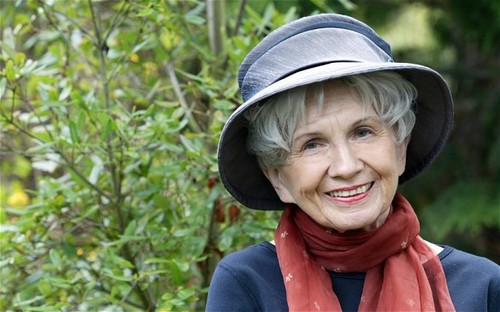
© Eve Asher
WILL ALLISON: When
I’m writing, I always keep a book of fiction on my desk, something to
jump-start me when I get stuck, or to productively divert me for a page or
three when I need some distance from whatever I’m working on. Over the past
decade, more often than not, the author of that book has been the Canadian
short-story writer Alice Munro.
I
first read Munro in 2001, when my wife, a longtime fan, gave me Munro’s
then-latest collection, Hateship, Friendship, Courtship, Loveship, Marriage.
Up until then, for no good reason (probably because she was older and
Canadian), I had always imagined Munro’s fiction to be staid and conventional.
Of
course, her stories aren’t like that at all. I was immediately struck by their unconventionality,
their (seeming) looseness of structure, their strangeness, their extraordinary depth. (Many readers have observed that
Munro’s stories pack the emotional and literary wallop of novels.) Also, the
setting of her stories—small-town Ontario—reminded me of the American South,
where I grew up, and I identified with her protagonists, who often find
themselves straining against conservative social mores.
What has been most influential to me as a
writer, though, is Munro’s style, the plainspoken elegance of her prose, its
seeming effortlessness, its invisibility. I cannot recall ever coming
across a single word in a Munro story that seemed out of place or struck a
false note. Try as I might, I would never claim to write like Munro, but most
of what I consider to be my best writing I’ve done while reading Munro. For
whatever reason, she is the author who most reliably puts me in a writing frame
of mind.
Since that first collection, I’ve gone on to read
(and reread) most of Munro’s subsequent books, including Runaway, Carried
Away: A Selection of Stories, and Too Much Happiness. Luckily, I’ve
barely scratched the surface of Munro’s canon and have a lot more stories to
look forward to.
DAN CHAON: The
stunning architecture of her complex stories continues to amaze and inspire me.
She understands the way in which the “telling” of the story—the
order of events in a narrative—can alter the effect on the reader. She is a
brilliant tracer of character emotions, the way small moments can ripple and
reflect larger ones.
MAILE CHAPMAN: Alice
Munro, not just for the clarity and beauty of her prose, or for her astute
psychological powers of observation, but for the way she uses these to
demonstrate breathtaking emotional cruelty as if it were an everyday fact of
life—which of course it is.
BRUCE MACHART: Her
stories are so very quiet on the surface and roiling with sexual and
psychological danger beneath. Imagine a
little placid stream, so still that dragonflies sleep on the surface, but one
whose subsurface torrent is so great that one ankle-deep step in it means that
you’re swept downstream, your head
bashed against the rocks. You’re lost
forever in its sweep and swirl. That’s
an Alice Munro story. And she does it
again and again.
ALIX OHLIN: In my
twenties I fell in love with the short story form and started reading it
seriously for the first time. I was also writing stories, of course, and trying
to figure out how they were made, what the possibilities were. I’d read Alice
Munro before—as the child of literate Canadian parents, it had been impossible
not to—but this was when she became a major influence on me. I was fascinated
both by her style (the radical jumps in time, the depth of psychological
interiority, the simple, unfussy, yet lyrically precise language) and the
subject of her work (especially the complex, intense, and even brutal way she
wrote about women). There is tremendous ambition and reach in her work, couched
in a sometimes deceptively quiet tone. Her story “Friend of My Youth”
is one I read over and over again during this time (and still do).
HARUKI MURAKAMI
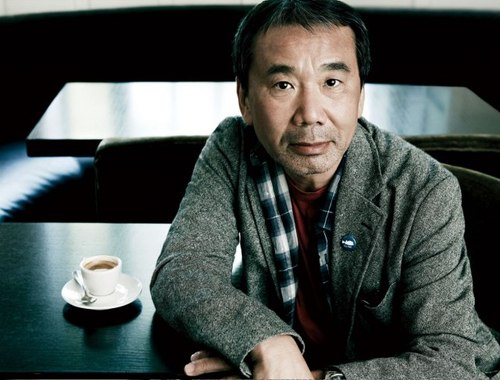
© Gasper Tringale
RYAN BOUDINOT: I always
get the feeling that I’m reading him more with my subconscious than my
conscious mind, that there are whole projects going on between his books and my
brain that I’m not aware of. And this has helped me approach my work a certain
way. When I wrote Blueprints of the Afterlife I thought a lot about how a
Murakami narrative makes me feel, and I leaned toward conjuring similar
feelings in my prose.
REBECCA CHACE: Last spring I taught a creative writing
class at Woodbourne prison in upstate New York, a medium security men’s
prison. I was teaching as part of the
Bard Prison Initiative (BPI) run by Bard College. I had decided that my prison class would
follow the same syllabus I taught in the MFA Creative Writing class at Brooklyn
College. It’s a tough, competitive
program at Brooklyn College, but word was that the BPI students wanted to be
pushed. The creative writing I
encountered at the MFA level was often rich in language and poor in narrative
structure, so I had begun to incorporate readings on the “Hero Journey” into
our discussions of modern fiction. I was
determined not to change my intellectual approach to the material for the
inmates, and for our second class the students read a Joseph Campbell excerpt
on “The Hero Journey” in conjunction with Murakami’s Kafka on the Shore. I drew
an arc on the blackboard marking stages of the hero journey as defined by
Campbell, and we discussed it in terms of the novel. Murakami’s novel has talking cats and
parallel worlds that reference both Japanese and Greek mythology. I admit that I had wondered if this nonrealistic
narrative would be too far out there for the prison population, but they got
right to the heart of what Murakami was exploring in his novel. In fact, they were much less critical of the
novel than my MFA students had been. The
Brooklyn College students thought that Murakami’s novel had too many plot holes
and that his references to the Oedipal myth lacked subtlety. The prisoners didn’t care about plot holes
and they thought the talking cats were just fine. They wanted to talk about whether it was
right for Oedipus to try to defy fate by leaving home once he heard the prophecy
about killing his father and marrying his mother. And what about his parents putting him out on
the mountainside to die when they
heard the prophecy? Were they wrong to
do that? I pointed out this was a big
argument: Do you believe in free will or determinism? One of the men who had been very vocal in
this discussion stopped dead, “You want to talk about that in here?” he asked.
“Sure, I’ll talk about it in here. We can
talk about anything as long as it has to do with the work.” I sounded braver than I was.
I wished that Murakami were there to hear
the discussion. He may have been
pleased, as I was, that talking cats and a boy who kills his father and sleeps
with his mother were the perfect medium for a conversation about how
storytelling is way we can begin to understand our own lives. Who does not have
a life filled with plot holes? Prison is not the only place where “reality” can
be a slippery concept indeed.
ALIX OHLIN: In the
past year or so I’ve been thinking a lot about Haruki Murakami’s work. I’m
drawn to the strangeness in his work, how it seems to break rules not just of
realism but of tone. He chooses the details he wants to present and leaves out
the others, and asks the reader to accept the surreal worlds he’s narrating,
without a lot of stylistic fanfare. Another writer might narrate dream worlds
in a lush or lyrical style but Murakami goes the opposite route, of deadpan
simplicity. The result is like a Magritte painting, somehow bright and strange
at the same time. I think it’s why his work feels both highly contemporary and
timeless. I’m interested in emulating that, or at least learning from it.
PETER ROCK: The
first time I encountered Murakami I was working on a ranch outside of Livingston, Montana,
where I lived in a small house I’d rented with my girlfriend. On the days I
didn’t go to the ranch where I worked, I stayed home and wrote. I was writing a
very important novel, one that had fifty chapters of ten pages each and would be
exactly five hundred pages long (I completed this, a disaster). I’d walk around
the house looking at the bookcases—we’d mixed up our books, a big step, and
there amid my Hemingway was a large, hardcover book. A Wild Sheep Chase. I read the title on its spine many, many times
before I deigned to take it off the shelf. The cover had a sheep on it, a
drawing of one, a star on its ass; but it was the back cover that I found more
infuriating. There, a seemingly mild-mannered Japanese man stood holding a cat.
I had a hard time taking him seriously, as he did not appear to be especially
fierce. Writers I admired had dogs, and glared into the middle distance.
Besides, I worked with sheep every day—what did a kitten-wielding Japanese man
have to teach me?
Seven
years later, my books had long been sifted from those of my ex-girlfriend, A Wild Sheep Chase still unread,
straying all the way to Toronto while I returned
to Utah, to San Francisco. In this time I had read
Kawabata’s amazing Palm of the Hand
Stories, along with Mishima, and Tanizaki; I had begun to wonder who might
have followed these masters when I came upon a story by Murakami called “New
York Mining Disaster.” The ferocity of the sensibility, the curiosity and
simplicity and depth—it was all there. That day I found another copy of A Wild Sheep Chase and began my
education. Now it’s almost twenty years since I first picked up that novel (I
was on Murakami before he became everywhere! I was also the first person to
ever snowboard!), back in the cold days of Livingston, Montana and I’ve read every one of
Murakami’s books.
Murakami
is obsessive, repetitious, and I revel in rather than grow irritated by the
similarity of his narratives. I expect the lost girl or cat, the dry well, all
that underground action, spaghetti cooking, sex that comes from strange
directions, as an emotional kind of friendship, the ear fetishism. It’s the
mysteries between people that he suggests so well, that he demonstrates with
stories that are a mixture of detective fiction and speculation and yearning;
this is a literature of curious heart, not pretension. Not showy prose (in an
interview, he said he strove to have no real style, as that would be
distracting; my Japanese mother-in-law, reading his prose in the original, was
quite unimpressed), but trust in his story. The shapes of his narratives arise
from within, so organically that it makes me wonder at the very nature of
fiction. In A Wild Sheep Chase, the
reader starts into a humorous detective novel, veers into a seemingly alternate
world, full of humor and surprise, and soon there is no turning back. A
character in the book is so transformed that he is said to have been ‘sheeped’;
in a sense, this is what happened to me. This is what happens to the reader of
Murakami. Our DNA is slightly shifted, recombined. Our world is not the same,
either. “I explain very carefully and clearly,” Murakami said in an interview,
describing his work, yet what he has to explain is so mysterious that a careful
explanation of what surrounds it is as close as we can get to apprehension.
There is no better combination of respect and delight.
–
Brock Clarke is the author
of the novels The Happiest People in the
World, Exley, An Arsonist’s Guide to Writers’ Homes in New
England, and The Ordinary White Boy,
as well as the short story collections What
We Won’t Do, and Carrying the Torch
Tony D’Souza is the author
of the novels Mule: A Novel of Moving
Weight, The Konkans, and Whiteman
Philipp Meyer is the author of the novels American Rust and The Son
James Scott is the author of the novel The Kept
Josh Weil is the author
of the novel The Great Glass Sea, and
the novella collection The New Valley
Adelle Waldman is the
author of the novel The Love Affairs of
Nathaniel P.
Jamie Quatro is the
author of the short story collection I
Want to Show You More
Kevin Brockmeier is the
author of the novels The Illumination,
The Brief History of the Dead, and The Truth About Celia, as well as the
short story collections The View from the
Seventh Layer, and Things That Fall
from the Sky
Alissa Nutting is the author of the novel Tampa
Adrienne Miller is the
author of the novel The Coast of Akron
Helen Phillips is the
author of the novel And Yet They Were
Happy
Jess Walter is the author
of the novels Beautiful Ruins, The Financial Lives of Poets, Land of the Blind, The Zero, Citizen Vince, Over Tumbled Graves, as well as the
short story collection We Live in Water
Charles Bock is the author
of the novel Beautiful Children
Stuart Nadler is the
author of the novel Wise Men, and the
short story collection The Book of Life
Elisa Albert is the author
of the novels After Birth, The Book of Dahlia, and the short story
collection How This Night is Different
Kathleen Alcott is the
author of the novel The Dangers of
Proximal Alphabets
Alix Ohlin is the author
of the novels Inside and The Missing Person, as well as the short
story collections Signs and Wonders,
and Babylon and Other Stories
Jennifer Cody Epstein is
the author of the novels The Gods of
Heavenly Punishment, and The Painter
from Shanghai
Ru Freeman is the author
of the novels On Sal Mal Lane, and A Disobedient Girl
Melinda Moustakis is the
author of the short story collection Bear
Down, Bear North: Alaska Stories
Joseph Salvatore is the
author of the short story collection To
Assume a Pleasing Shape
Will Allison is the author
of the novels Long Drive Home and What You Have Left
Dan Chaon is the author of
Stay Awake: Stories, Await Your Reply: A Novel, You Remind Me of Me: A Novel, and Among the Missing: Stories
Maile Chapman is the
author of the novel Your Presence is
Requested at Suvanto
Bruce Machart is the
author of Men in the Making: Stories,
and The Wake of Forgiveness: A Novel
Ryan Boudinot is the
author of Blueprints of the Afterlife,
Misconception, and The Littlest Hitler: Stories
Rebecca Chace is the
author of the novels Leaving Rock Harbor and Capture the Flag
Peter Rock is the author
of the novels The Shelter Cycle, My Abandonment, The Unsettling, The
Bewildered, The Ambidextrist, Carnival Wolves, and This is the Place
Lettering by Caleb Misclevitz
–




